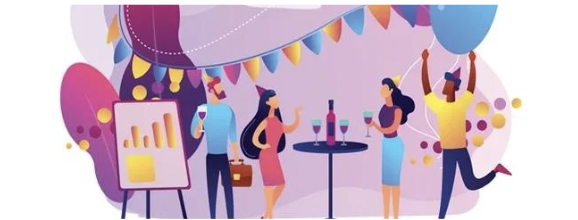As the vibrant Ganesh Chaturthi season approached, Meera, a sales executive at a mid-sized pharmaceutical company, was excited. The festival was a time for family, devotion, and celebration. She had taken a few days off to help with preparations and participate in local festivities. Her company was also hosting fun events— competitions, potlucks, and office decorations. Amid the back-to-back activities, Meera struggled to keep up with her daily routine. Her team was approaching their quarterly sales target, and she knew the month’s end was crucial. However, by the time Ganesh Chaturthi ended, Meera found herself significantly short of her sales goals.
It wasn’t just Meera. Many of her colleagues across departments were juggling festival commitments, office events, and work. While the company supported time off for the festival, the workload didn’t adjust itself. Meera, along with others, faced the classic year-end dilemma of balancing work productivity during festivals and meeting end-of-year targets.
This situation raises an essential question: How can employees like Meera balance festive celebrations with professional responsibilities, and what role can organizations play to support this balance?
The Role of Organizational Psychology:
The challenge Meera faced isn’t just about time management; it is connected to workplace dynamics, motivation, and productivity. This is where the Job Demands-Resources (JD-R) Model by Demerouti and Bakker (2001) becomes relevant, as it directly addresses the balance between employee well-being and productivity.
This theory suggests that job performance is influenced by job demands (aspects of the job requiring effort) and job resources (aspects that help achieve work goals or reduce demands). During festive seasons, demands increase due to personal obligations, while job demands remain unchanged. Without adequate resources, employees may struggle, leading to stress and lower productivity.
Let’s break down the JD-R Model in this context:
1) Managing Job Demands
During festivals, employees face both personal and work demands. For instance, in sales-driven industries like pharmaceuticals, year-end quotas need attention. In Meera’s case, her tasks—client follow-ups, meetings, and order processing—were vital, but her personal life pulled her away.
Solution:
Organizations can offer flexible working hours or remote work options during festivals. This flexibility allows employees to manage personal commitments without sacrificing productivity.
2) Boosting Job Resources
Resources at work include more than tools and technology. Emotional support, clear communication, and extra help are crucial. While Meera’s company supported her time off, the sales team lacked resources to handle the workload in her absence.
Solution:
Companies can temporarily redistribute the workload or hire short-term staff. Automating goal-tracking systems also helps employees stay on top of tasks without feeling overwhelmed.
3) Maintaining Work Engagement
The JD-R Model emphasizes work engagement—a positive state of work-related well-being. Festivals can distract employees, but companies that promote engagement through recognition and support can keep them motivated.
Solution:
Employers can encourage short breaks for celebrations while reinforcing professional goals. Gamifying targets with incentives during festive times can help maintain focus.
4) Preventing Burnout
Burnout occurs when demands consistently exceed resources. Festivities can intensify burnout if employees feel torn between work and celebrations. This can lead to stress and disengagement, as seen with Meera after she missed her sales target.
Solution:
Wellness programs or stress management workshops before festivals can help. Setting realistic targets, knowing that distractions are likely, can prevent overburdening employees.
Conclusion:
Festivals bring joy, connection, and a much-needed break from routine. However, balancing these celebrations with professional goals requires thoughtful strategies from both employees and organizations. By understanding the dynamics of job demands and resources, companies can foster a supportive environment where employees can enjoy the festive season without compromising productivity. Ultimately, it’s about creating a workplace where Meera—and many others like her—can hit their targets while still celebrating life’s important moments.
About the Author


